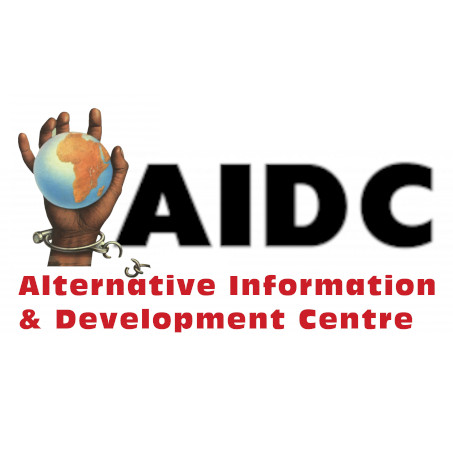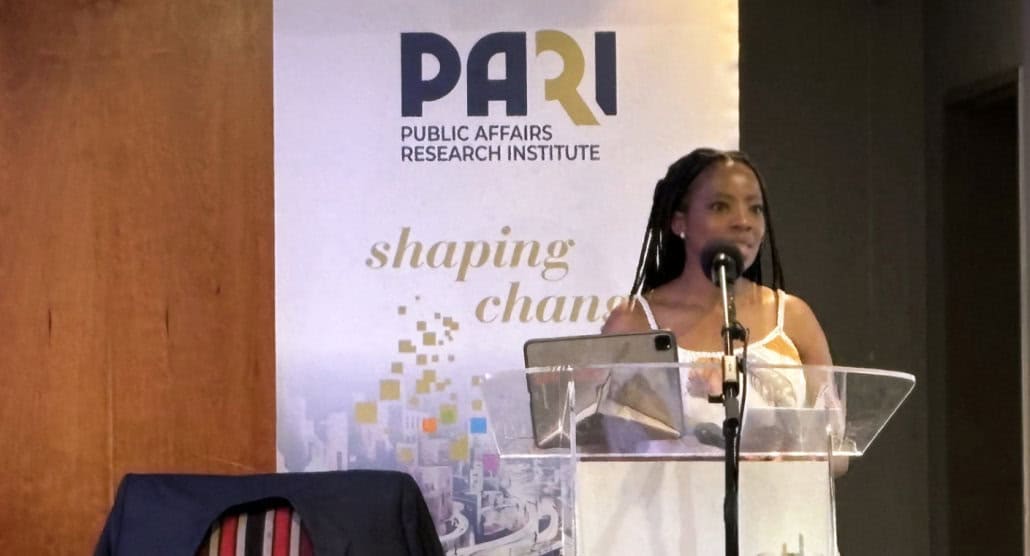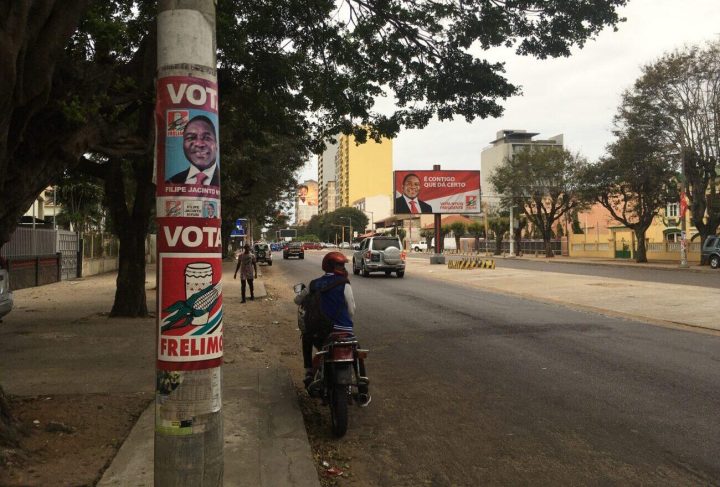Posted on by AIDC

The Medium-Term Budget Policy Statement, which sets the framework for the national budget over the next three years is a disaster for a country on the brink of social collapse.
South Africa is facing a devastating social crisis, not a debt crisis. While the growth in public debt is a concern, much of this debt is owed in Rands. Moreover, huge public funds are available for so-called “concessionary lending”. In addition, as pointed out by many critics of the panic that preceded the MTBPS, the debt-to-GDP ratio is in line with the average of middle-income and emerging economies. There is a lot to be done. But the Treasury must be prepared to abandon its free market orthodoxy and stop repeating what has failed, both here and in other parts of the world.
More austerity will not deal with growing debt levels precisely because it leads to a contraction of the economy and in turn a growing debt-to-GDP ratio, higher levels of mass unemployment, deeper inequality and social despair. In October, the Children’s Institute at UCT reported via the Department of Social Development that 8 million children are going hungry. And women, who do most of the care work, without pay, bear the burden of this social crisis that also escalates gender-based violence by the week.
When we consider this three-year budget framework, it is as if the Treasury and government more generally, ignore that South Africa has a mass unemployment crisis — probably the worst in the world; inequality, which is the worst globally, and a war on women and their bodies on the scale of a civil war.
On the other hand, austerity budgeting assures investors and the elites that they will not be taxed to relieve the suffering of the vast majority of the population. And it signals to creditors their money will be repaid, come what may.
Thus, the 2023 Medium Term Budget Policy Statement continues the harsh austerity trajectory that the government has committed to from 2019. The National Treasury aims to reduce spending as a percentage of GDP by 1.5% by 2025/26. R21,7 billion is cut from the budget announced in February, when excluding the ‘additions’ to the public sector wage bill which ought to have been budgeted for in the main budget.
Compared to this financial year 2023/24, the MTBPS has a plan to make real cuts over three years of another R42 billion from Education (‘Learning and Culture’), R30 billion from Public Health and R31.5 billion from the police and the Courts. Again, it is the majority of working-class women who will suffer. They are the majority of workers in the health and education sectors.
The public sector wage bill and the continuation of unfilled vacancies
The 2023 public sector wage agreement was based on inflation-linked “wage increases for 2024/25”. The MTBPS envisages this for the coming three years. Yet, the MTBPS has budgeted next year for just an increase of the total public wage bill of 2 percent (page 53), whilst forecasting an inflation rate of 4.7% (page 59). The only way to square this circle is for the government to further cut the number of jobs in the public sector. Indeed, a key concept in the MTBPS is “reconfiguration”. To achieve this, the National Treasury assumes (and hopes) that people will take early retirement packages, and to freeze the appointment of new public servants so as to “manage headcounts”. There is no chance, therefore, of filling the more than 200 000 vacancies in the public sector. Once again, the Treasury indicates that this will negatively impact learning outcomes and increase, again, the number of learners in the classrooms.
The narrative that puts public sector wages in direct competition with public sector jobs is harmful and ultimately false. In an answer to an MP’s question in May, the minister of Public Service and Administration noted that one of the chief challenges in filling certain vacancies within the public sector was “competition with the private sector”. It is a fact that the public sector has a dearth of experienced workers with specialised skills. The Treasury’s uncompromising position on this issue will only worsen the matter. Instead, resources ought to be dedicated to expanding both compensation and employment.
Rather than raising additional revenue to invest in restoring public services and creating employment, the government hopes the private sector will save us. Here, the continued commitment to privatising the energy market is central. The unbundling of Eskom and amendments to the Electricity Regulation Act is the basis for the creation of a “competitive” energy market and greater privatisation of energy generation. The bailout of Eskom is conditional on it making space for the private sector to compete with the public utility.
Social protection
The allocations towards social support are expected to remain the same – but only in nominal terms. In real terms, the R350 SRD grant has already taken a cut of around R70 when accounting for inflation from 2020. However, the MTBPS notes that after this, “a comprehensive review of the entire social grant system by the Department of Social Development and the National Treasury is required”. So long as austerity continues to defeat the Treasury’s own “fiscal consolidation” plans, this does not bode well for the future of the SRD after 2025, not least for the prospects of a Basic Income Grant as demanded by progressive thinkers and organisations representing unemployed and working-class South Africans.
Where’s the money?
While the MTBPS complains about the increasing interest rates on government borrowing, it nonetheless sticks to a pro-financial-industry approach to the government’s growing debt.
For close to a decade, the Government Employee Pension Fund has run with annual surpluses of R50 billion after paying pensions and benefits to its members. The GEPF, valued at R2.3 trillion, holds 14% of the Treasury’s and 18% of Eskom’s debt. This public entity is by far the largest single creditor of both Eskom and the government, but it is charging the same interest rates as the financial industry on its lending, now reaching over 12% for long-term borrowing.
Instead of taking even more loans from the World Bank and the IMF (another US$ billion was again borrowed two weeks ago), and promising to continue with austerity and the privatisation plans, the government should turn to its own public sector partners for the “concessionary lending” that the MTBPS is speaking about. In fact, even a one-year moratorium on the government’s contribution to the Government Employees Pension Fund (GEPF) would raise an additional R50 billion without putting payments of the pensions at risk.
A number of tax measures can be implemented immediately and over the medium term to raise more revenue. The tax incentives benefiting the affluent minority and major corporations should be reviewed. The medical aid tax deductions cost the fiscus R35 billion per year. The 1%-point cut in the corporate income tax rate from 2022 can be reversed. The ‘inflationary relief’ provided every year even to high-income earners should be scrapped. Together these measures could raise in excess of R50 billion in forgone revenue for this financial year.
Over the medium-term and beyond, additional revenue-raising options should be explored to enhance the progressivity of the South African tax framework toward a 32% tax-to-GDP ratio. These measures include combating illicit financial flows, base erosion and profit shifting, as well as clamping down on tax evasion by high-net-worth individuals. Each year transnational corporations shift between $15 billion and $25 billion to tax havens. Stopping profit shifting could help to raise additional tax revenue of up to R100bn each year. Given the massive and continued concentration of wealth, it is essential to establish a progressive net wealth tax. Research shows that a graduated and small wealth tax of between 3% and 7% could raise R140 billion annually.
All of these revenue-raising options highlight how there is in fact no need for these harsh austerity measures. Moreover, the National Treasury’s proposals are unconstitutional given that it fails to explore revenue-raising alternatives before implementing budget cuts, leading to people’s Constitutional Rights not being progressively realised but progressively regressed. Of course, the National Treasury refuses to engage with such policy options. It would open the door for a discussion on the nature of economic policy and it would bring into question the assumptions upon which economic policy has rested until now.
AIDC, together with our social movement and trade union partners, are convinced that the government will not shift GEAR. It will continue with the bitter medicine our creditors and elites are forcing down our throats. Organising in our communities and workplaces must continue and be intensified for jobs, for decent services, for land and for a basic income grant. Austerity and privatisation must be resisted. An alliance of our communities, trade unions, youth and women’s formations will need to come together in a mass movement for a people’s budget and economy if the suffering of our people is to end.
_____________________________________________________________________________________________________
The Alternative Information and Development Centre (AIDC) works with popular organisations and trade unions to support campaigns and struggles for a just transition to a wage-led, low-carbon development path.
For more information, contact:
• Dominic Brown – dominic@aidc.org.za 081 309 4973
• Dick Forslund – dick@aidc.org.za 076 359 2982
• Jaco Oelofsen – jaco@aidc.org.za 084 376 9019






